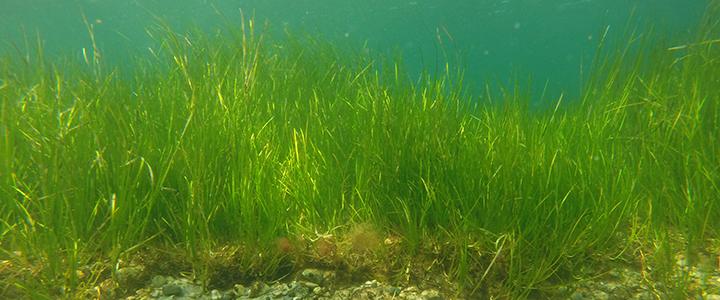
Commissioner's Column: First in the Nation Permit Issued to Restore the Great Bay Estuary
Many years of discussion, controversy and monitoring have culminated in a novel approach to addressing the degradation of the Great Bay estuary, one that will benefit the people, water and eelgrass in those waters.
Eelgrass (zostera maritima) is a plant that few people ever see. It is a seagrass that provides numerous ecological benefits to estuaries. Yet in the seacoast region of New Hampshire, its decline has had major ramifications for both the ecosystem and the communities that surround the Great Bay estuary. Back in 2003, the Piscataqua Region Estuaries Partnership (based out of UNH) reported that the “Eelgrass cover in Great Bay has been relatively constant for the past 10 years at approximately 2,000 acres.” A mere six years later, more data had been collected and the analysis was bleak, “Eelgrass cover in the Great Bay itself has declined by 37% between 1990 and 2008 and has completely disappeared from the tidal rivers, Little Bay, and the Piscataqua River.” These losses mirror eelgrass declines around the world and have been shown to be caused by excess pollution, especially nitrogen.
The disappearance of eelgrass, loss of oysters (a decline of over 95%) and other signs of ecological stress, led to a serious conversation about how to restore this amazing body of water. The alarm was sounded and the scientists and managers responded. Since that time, we understand a great deal more about the estuary. And, the municipalities that discharge wastewater and stormwater to the estuary have made great strides in reducing their pollution. However, the path towards a regulatory process to lock in those improvements and to continue to make progress has been extremely controversial. Legal battles ensued. Trust between regulators and permittees was in short supply. Disagreements over the science were constant.
Now, that has begun to change. In 2019, in response to requests for a flexible approach to permitting from the communities and the state, EPA proposed a draft Nitrogen General Permit to cover the 13 wastewater treatment plants (WWTPs) in 12 communities. This is a novel approach that has never been attempted anywhere in the country. The permit sets out an adaptive management approach that includes effluent limitations for the WWTPs and five elements of adaptive management. Those five elements include ambient monitoring, pollutant tracking and accounting, nitrogen reduction planning and implementation, development of nitrogen targets for future permitting, and the potential for a sector-by-sector nutrient allocation plan. Interestingly, this Nitrogen General Permit was voluntary, that is, the permittees could “opt-in” if they wished. If not, then EPA would create an individual permit that would not have included the flexibility afforded by the general permit, and most resulted in a stricter effluent limit at the WWTP.
The General Permit was issued on November 24, 2020 and was effective beginning on February 1, 2021. By April 1, 2021, all 12 communities decided to opt-in and are now in the process of developing plans as required for the five elements of adaptive management by July 30, 2021. They are also creating an inter-municipal agreement (IMA) that will link their efforts together so that they can “row in the same direction.” However, not everyone was happy with the Nitrogen General Permit. The Conservation Law Foundation (CLF) expressed their concern that the flexible nature of the permit could allow the communities to make little progress in pollution reductions. To assuage their concerns, the cities of Portsmouth, Dover and Rochester recently entered into an agreement with CLF that expands some of the accountability measures to ensure that nutrient reductions will result from things like stormwater treatment, reduced fertilizer use, and properly functioning septic systems. As a result of the agreement, CLF will stand up a stakeholder committee to interact with the communities and the cities will develop annual lists of projects that can be reviewed by the stakeholders. The cities and CLF will also create a joint project related to water quality improvements.
NHDES is happy to have participated with EPA and the communities in the development of this approach and permit. Last July, I sent a letter to EPA that outlines NHDES’ commitment to assist the communities. Examples include contributions of funding and staff support for ambient monitoring and pollution tracking, technical assistance, analysis of state policies that could help reduce nitrogen, and a focus on improving science to support future permit targets. Finally, NHDES is most pleased that the agencies, organizations and municipalities can move forward together to improve the health of the Great Bay estuary. And, we encourage all residents of the state to visit Great Bay, take in its beauty, and maybe even dip your head below the water surface to see the eelgrass for yourself.




